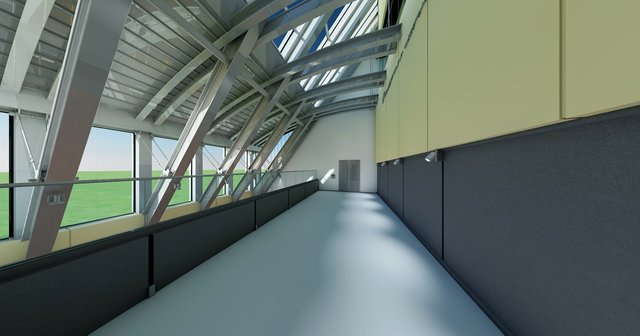Modern architecture in the 21st century
The term "modernity" refers to various trends, some of which merge into one another and often cannot be clearly distinguished from each other, such as the Bauhaus style, Expressionism or New Objectivity.

Guiding principle: Form follows function
The technical basis for classical modern architecture is provided by the use of steel, glass and reinforced concrete (reinforced concrete) as building materials. The theoretical guidelines of classical modernism, according to which practical architecture orientated itself, can be recognized by three primary principles:
Form follows function (Louis Sullivan) - The form follows function, Less is more - less is more (Ludwig Mies van der Rohe) and the core statement of a polemic written by Adolf Loos in 1908: ornament and crime. Accordingly, the design of modern architecture should derive from the architectural function. This is made clear, for example, by the visibility of the building skeleton of a building. In addition, it is dominated by a simple, simplistic presentation and design.
Simplicity versus ornamental opulence
An essential feature of modern architecture is its rejection of the ornamental concept coined by Adolf Loos. Loos expressed his strong opposition to the use of ornamental ornamentation, which had decisively influenced previous architectural movements such as Art Nouveau. Thus, the modern age as a whole can be interpreted as a countermovement to the nineteenth century style limitation with its ornamental opulence. About the Bauhaus style in Weimar and Dessau, which today is regarded worldwide as the home of the avant-garde of classical modernism in all fields of free and applied art,
the modern architecture was then propagated to its own style.
Historical Embedding
Planned from the beginning of the twentieth century onwards, the trend towards modern, contemporary architecture intensified after the Second World War. Reconstruction in Europe has seen the use of new techniques in the production of glass and steel and the use of reinforced concrete as a basis for urban development. This approached the architectural, political and social movements of the time. Modernity found its way into the USA from the 1930s and 1940s of the twentieth century onwards, from where it spread across large parts of the world. In response to the geometric constructions in America and Great Britain, a new generation of architects attempted to respond to the wishes and needs of city dwellers. The Italian, American and Spanish schools, which clearly distinguished themselves from the older representatives of modern architecture, focused on urban architecture. Important architects of the modern architectural movement included Walter Gropius, Ludwig Mies Van der Rohe, Erich Mendelsohn, Frank Lloyd Wright and Le Corbusier.